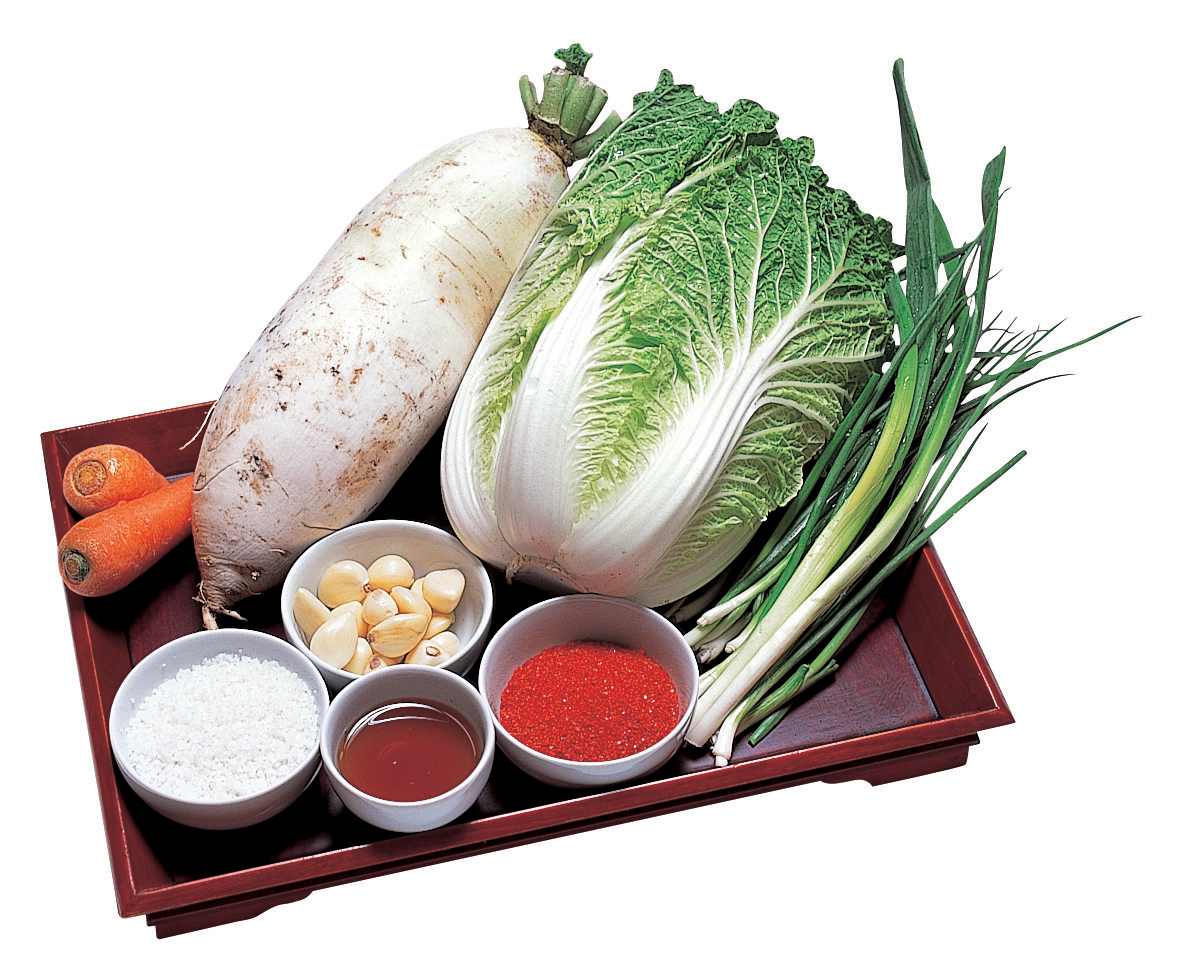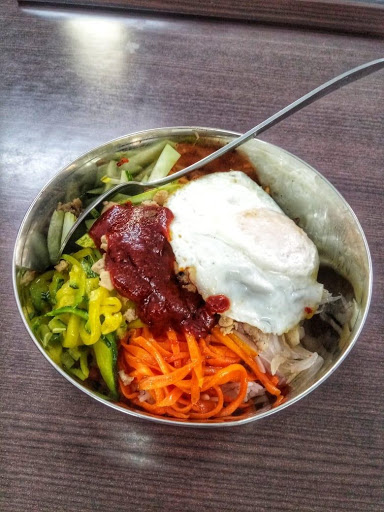|
Joam
Joam is a small town located in Gyeonggi-do, South Korea. The town is a part of the primarily rural and agricultural city of Hwaseong. Joam is also the urban center of Ujeong-eup, the population of which is approximately 18,000 and which encompasses both Joam and much of the surrounding countryside. Agriculture is the primary use of land in the region, rice being the main crop but with Chinese cabbage, radish, chili peppers, other fruit and vegetables, and livestock being grown and raised. The area is also home to several industrial sites including a large Kia Motors test facility. Joam has many small businesses, restaurants and a traditional market with 752 stalls, which has operated since 1965. It is a village surrounded by mountains. Because there is a large stone, the name Joam was derived from the words Morningdol, Dollaemal, or Joam, Joam-dong, and Jowon-dong. Origin of name In Joam-ri, there used to be a large Chadol Rock inside the old village. When the sun rose in the ... [...More Info...] [...Related Items...] OR: [Wikipedia] [Google] [Baidu] |
Hwaseong, Gyeonggi
Hwaseong (; ) is a Administrative divisions of South Korea, city in Gyeonggi Province, South Korea. It is located on the coast of the Yellow Sea. It has the largest area of farmland of any city or county in Gyeonggi Province. Seoul Subway Line 1 passes through Hwaseong, stopping at Byeongjeom Station. Suin–Bundang Line, Suin-Bundang Line also passes through the city, stopping at Eocheon Station. Hwaseong Fortress is located in nearby Suwon. History During the time of the early Three Kingdoms of Korea, parts of modern-day Hwaseong was controlled by the state of Wonyang (), a small statelet that was part of the Mahan confederacy. In 1949, when Suwon was split from the rest of Suwon County, the remaining area of Suwon County was renamed to Hwaseong County, after Hwaseong Fortress in Suwon. On January 1, 1989, the Eup (administrative division), town of Osan was promoted to a city, splitting from Hwaseong County. On March 21, 2001, Hwaseong County would also be promoted to the sta ... [...More Info...] [...Related Items...] OR: [Wikipedia] [Google] [Baidu] |
Village
A village is a human settlement or community, larger than a hamlet but smaller than a town with a population typically ranging from a few hundred to a few thousand. Although villages are often located in rural areas, the term urban village is also applied to certain urban neighborhoods. Villages are normally permanent, with fixed dwellings; however, transient villages can occur. Further, the dwellings of a village are fairly close to one another, not scattered broadly over the landscape, as a dispersed settlement. In the past, villages were a usual form of community for societies that practice subsistence agriculture and also for some non-agricultural societies. In Great Britain, a hamlet earned the right to be called a village when it built a church.-4; we might wonder whether there's a point at which it's appropriate to talk of the beginnings of French, that is, when it wa ... ''village'', from Latin ''villāticus'', ultimately from Latin ''villa'' (English ''vi ... [...More Info...] [...Related Items...] OR: [Wikipedia] [Google] [Baidu] |
Nonghyup
The South Korean National Agricultural Cooperative Federation (initialized as NH (in Korean, derived from NongHyup) or NACF) was established in 1961 to enhance the social and economic status of its membership and to promote a balanced development of the national economy. Its role is divided into three areas: marketing and supply, banking and insurance, and extension services. Terminology Although literally referring to local member cooperatives, the term ''nonghyup'' is used by South Koreans to describe both a local cooperative () and the NACF (). History * 2012 - NACF restructured into a federation with two holding companies, to increase effectiveness and competitiveness * 2011 - Ranked ninth largest cooperative by the International Cooperative Alliance * 2011 - Opened NH Residential Hall to accommodate 500 students from farming households * 2011 - Launched 50th anniversary emblem and slogan * 2008 - Ranked third largest cooperative by the International Cooperative Alliance ... [...More Info...] [...Related Items...] OR: [Wikipedia] [Google] [Baidu] |
Buddhist
Buddhism, also known as Buddhadharma and Dharmavinaya, is an Indian religion and List of philosophies, philosophical tradition based on Pre-sectarian Buddhism, teachings attributed to the Buddha, a wandering teacher who lived in the 6th or 5th century Before the Common Era, BCE. It is the Major religious groups, world's fourth-largest religion, with about 500 million followers, known as Buddhists, who comprise four percent of the global population. It arose in the eastern Gangetic plain as a movement in the 5th century BCE, and gradually spread throughout much of Asia. Buddhism has subsequently played a major role in Asian culture and spirituality, eventually spreading to Western world, the West in the 20th century. According to tradition, the Buddha instructed his followers in a path of bhavana, development which leads to Enlightenment in Buddhism, awakening and moksha, full liberation from ''Duḥkha, dukkha'' (). He regarded this path as a Middle Way between extremes su ... [...More Info...] [...Related Items...] OR: [Wikipedia] [Google] [Baidu] |
Christians
A Christian () is a person who follows or adheres to Christianity, a monotheistic Abrahamic religion based on the life and teachings of Jesus Christ. Christians form the largest religious community in the world. The words '' Christ'' and ''Christian'' derive from the Koine Greek title (), a translation of the Biblical Hebrew term '' mashiach'' () (usually rendered as ''messiah'' in English). While there are diverse interpretations of Christianity which sometimes conflict, they are united in believing that Jesus has a unique significance. The term ''Christian'' used as an adjective is descriptive of anything associated with Christianity or Christian churches, or in a proverbial sense "all that is noble, and good, and Christ-like." According to a 2011 Pew Research Center survey, there were 2.3 billion Christians around the world, up from about 600 million in 1910. Today, about 37% of all Christians live in the Americas, about 26% live in Europe, 24% live in sub-Saharan Afric ... [...More Info...] [...Related Items...] OR: [Wikipedia] [Google] [Baidu] |
Banchan
''Banchan'' ( ; ; ) are small side dishes served along with cooked rice in Korean cuisine. ''Banchan'' are often set in the middle of the table to be shared. At the center of the table is the secondary main course, such as ''galbi'' or ''bulgogi'', and a shared pot of ''jjigae''. Bowls of cooked rice and ''guk'' (soup) are set individually. ''Banchan'' are served in small portions, meant to be finished at each meal and replenished during the meal if not enough. Usually, the more formal the meals are, the more ''banchan'' there will be. Jeolla Province is particularly famous for serving many different varieties of ''banchan'' in a single meal. The basic table setting for a meal called ''bansang'' usually consists of ''bap (food), bap'' (, cooked rice), ''guk'' or ''guk, tang'' (soup), ''gochujang'' or soy sauce, ''ganjang'', ''jjigae'', and ''kimchi''. According to the number of ''banchan'' added, the table setting is called ''3 cheop'' (), ''5 cheop'' (), ''7 cheop'' (), ''9 c ... [...More Info...] [...Related Items...] OR: [Wikipedia] [Google] [Baidu] |
Kimchi
Kimchi (; ) is a traditional Korean side dish (''banchan'') consisting of salted and fermented vegetables, most often napa cabbage or Korean radish. A wide selection of seasonings are used, including '' gochugaru'' (Korean chili powder), spring onions, garlic, ginger, and '' jeotgal'' (salted seafood). Kimchi is also used in a variety of soups and stews. Kimchi is a staple food in Korean cuisine and is eaten as a side dish with almost every Korean meal. There are hundreds of different types of kimchi made with different vegetables as the main ingredients. Examples of variants include ''baechu-kimchi'', ''kkakdugi'', '' chonggak-kimchi'', and '' oi-sobagi''. Traditionally, winter kimchi, called '' gimjang'', was stored in large earthenware fermentation vessels, called '' onggi'', in the ground to prevent freezing during the winter months and to keep it cool enough to slow down the fermentation process during summer months. The process of making kimchi was called gimjan ... [...More Info...] [...Related Items...] OR: [Wikipedia] [Google] [Baidu] |
Kimbap
''Gimbap'' (; ), also romanized as ''kimbap'', is a Korean dish made from ''bap'' (cooked rice), vegetables, and optionally cooked seafood or meat, rolled in '' gim''—dried sheets of seaweed—and served in bite-sized slices. * Some sources say it originates from Japanese norimaki, introduced during Japanese colonial rule, while others argue it is a modernized version of ''bokssam'' from the Joseon era. The dish is often part of a packed meal, or ''dosirak'', to be eaten at picnics and outdoor events, and can serve as a light lunch along with '' danmuji'' (yellow pickled radish) and kimchi. It is a popular takeaway food in South Korea and abroad. Etymology '' Gim'' () refers to edible seaweed in the genus ''Porphyra'' and ''Pyropia''. ''Bap'' () broadly refers to cooked rice. The compound term ''gimbap'' is a neologism; it was not a part of the Korean language until the 20th century. The term ''gimbap'' was used in a 1935 Korean newspaper article but at the time, the loa ... [...More Info...] [...Related Items...] OR: [Wikipedia] [Google] [Baidu] |
Bibimbap
Bibimbap * ( ; ), sometimes Romanization of Korean, romanised as bi bim bap or bi bim bop, is a Korean rice dish. The term ''bibim'' means "mixing" and ''Bap (rice dish), bap'' is cooked rice. It is served as a bowl of warm white rice topped with ''namul'' (sautéed or blanched seasoned vegetables) and ''gochujang'' (chili pepper paste). Egg and sliced meat (usually beef) are common additions, stirred together thoroughly just before eating. In South Korea, some cities such as Jeonju, Jinju, and Tongyeong are known for their versions of bibimbap. In 2017 the dish was listed at number 40 on the ''World's 50 most delicious foods'' readers' poll compiled by CNN Travel. Etymologies ''Bibimbap'' has gone by a number of names over time. Its earliest names appear in Korean hanja texts. Its first name was ' (). This name appeared in the ''Yeokjogumun'' () portion of the book ''Historical Notes of Gijae'' (), which was written by Bak Dongnyang () around 1590. In the ''Cheongdae ilgi ... [...More Info...] [...Related Items...] OR: [Wikipedia] [Google] [Baidu] |
Dak Galbi
''Dak-galbi'' (), or spicy stir-fried chicken, is a popular South Korean dish made by stir-frying marinated diced chicken in a ''gochujang''-based sauce with sweet potatoes, cabbage, perilla leaves, scallions, ''tteok'' (rice cake), and other ingredients. * In Korean, ''galbi'' means rib, and usually refers to braised or grilled short ribs. Dak-galbi is not made with chicken ribs, however, and the dish gained this nickname during the post-War era when chicken was used as a substitute for pork ribs. Many ''dak-galbi'' restaurants have round hot plates that are built into the tables. Lettuce and perilla leaves are served as ''ssam'' (wrap) vegetables. History and etymology This dish was developed in the 1960s as grilled chicken-pieces, an inexpensive '' anju'' accompaniment to alcoholic drinks in small taverns on the outskirts of Chuncheon. It replaced the comparatively expensive '' gui'' dishes which were grilled over charcoal. ''Dak-galbi'' spread to Chuncheon's main distri ... [...More Info...] [...Related Items...] OR: [Wikipedia] [Google] [Baidu] |
Karaoke
is a type of interactive entertainment system usually offered in nightclubs and bars, where people sing along to pre-recorded accompaniment using a microphone. Its musical content is an instrumental rendition of a well-known popular song. In recent times, lyrics are typically displayed on a video screen, along with a moving symbol, changing colour, or music video images, to guide the singer. In Chinese-speaking countries and regions such as mainland China, Hong Kong, Taiwan and Singapore, a karaoke box is called a KTV. The global karaoke market has been estimated to be worth nearly $10 billion. Karaoke's global popularity has been fueled by technological advancements, making it a staple of social gatherings and entertainment venues all over the world. The precursors of karaoke machines using cassette tapes made their first appearances in Japan and the Philippines in the 1970s. Commercial versions manufactured by Japanese companies using LaserDisc became available world ... [...More Info...] [...Related Items...] OR: [Wikipedia] [Google] [Baidu] |
Black Tea
Black tea (also literally translated as red tea from various East Asian languages) is a type of tea that is more tea processing, oxidized than oolong, yellow tea, yellow, white tea, white, and green tea, green teas. Black tea is generally stronger in flavour than other teas. All five types are made from leaves of the shrub (or small tree) ''Camellia sinensis,'' though ''Camellia taliensis'' is also rarely used. Two principal varieties of the species are used – the small-leaved Chinese variety plant (''C. sinensis'' var. ''sinensis''), used for most other types of teas, and the large-leaved Assamese plant (''C. sinensis'' var. ''assamica''), which was traditionally mainly used for black tea, although in recent years some green and white teas have been produced. First originating in China, the beverage's name there is ''hong cha'' (, "red tea") due to the colour of the oxidized leaves when processed appropriately. Today, the drink is widespread throughout East Asi ... [...More Info...] [...Related Items...] OR: [Wikipedia] [Google] [Baidu] |








